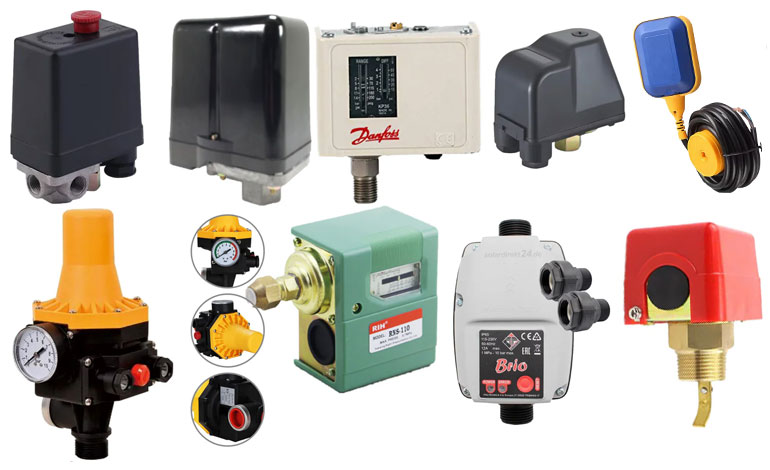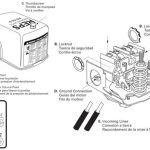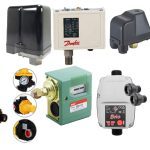A water pressure switch is an essential component in regulating the operation of water systems across various applications, from residential homes to commercial and industrial setups. Its primary function is to monitor the water pressure and activate or deactivate the water pump based on preset pressure levels. Choosing the right pressure switch for your water system is crucial to ensuring operational efficiency, system longevity, and reliable performance. In this article, we will explore key factors to consider when selecting a water pressure switch, with a focus on residential applications, including pressure range, switch type, electrical ratings, material durability, and compatibility with your pump system.
Understand the Basics of a Water Pressure Switch
A water pressure switch operates by sensing changes in water pressure within a system and regulating the pump’s activity accordingly. When the water pressure drops below a set minimum, known as the cut-in pressure, the switch activates the pump to restore the pressure. Once the desired maximum pressure, or cut-out pressure, is reached, the switch turns off the pump. This process helps maintain consistent water pressure, preventing both over- and under-pressurization.
Key components of a pressure switch include:
- Adjustable Pressure Settings: Many switches allow for manual adjustment of cut-in and cut-out pressures, which is crucial for tailoring the switch to your specific needs.
- Electrical Contacts: These must align with your pump’s voltage and current requirements to ensure proper operation.
- Diaphragm or Piston Mechanism: This component is sensitive to pressure changes and triggers the activation or deactivation of the pump.
Determining the Correct Pressure Range
When selecting a water pressure switch, one of the most important factors to consider is the pressure range it supports. Different systems require different pressure settings based on their size and function:
- Residential Systems: Typically operate within the range of 30-50 psi (pounds per square inch). This is ideal for homes with standard plumbing systems and typical water usage.
- Commercial/Industrial Systems: Larger systems may require higher pressure settings, ranging from 50-100 psi or more, depending on the system’s needs and capacity.
To select the correct pressure range for your system, start by checking the pump’s specifications. The switch must be compatible with the operating pressure range of the pump. Additionally, some switches allow for manual adjustments, enabling you to fine-tune the pressure range to suit your system’s requirements. It’s essential to avoid exceeding the pump’s maximum capacity to prevent damage or premature wear.
Choosing Between Mechanical and Electronic Pressure Switches
There are two primary types of water pressure switches: mechanical and electronic. Each offers distinct benefits depending on the needs of your system.
- Mechanical Pressure Switches: These switches rely on a spring and diaphragm mechanism to activate and deactivate the pump. They are typically more affordable, widely available, and well-suited for standard residential systems. However, they may require periodic calibration to ensure accuracy.
- Electronic Pressure Switches: These switches use digital sensors to provide more precise control over the system. They tend to be more durable and accurate, often including programmable settings for enhanced performance. Electronic switches are particularly ideal for high-precision or industrial applications where fine control is required.
For most residential systems, a mechanical switch will suffice. However, if you are looking for advanced control features, such as more precise pressure adjustments, an electronic switch may be worth considering.
Material Durability and Compatibility with Your Pump System
Since water pressure switches are exposed to water and frequent pressure fluctuations, the material construction is crucial for durability. Residential systems often use switches made from plastic, which are lightweight and corrosion-resistant, though it is more vulnerable to mechanical stress, UV degradation (in outdoor environments), and extreme temperatures. For well water systems or environments with harsher conditions, metal-bodied switches (brass or stainless steel) may be more appropriate. They offer increased durability and resistance to environmental factors like UV exposure, physical wear, and extreme pressure variations.
Additionally, ensure the switch is compatible with your pump type:
- Submersible Pumps: These pumps may require switches that can handle higher pressure tolerances.
- Jet Pumps: These systems often cycle frequently, so a switch designed to manage this type of operation is necessary.
- Constant Pressure Systems: These systems use variable-speed pumps to maintain a consistent pressure, and the pressure switch must be able to interact with these systems to provide the correct performance. More advanced electronic pressure switches are typically used (rather than mechanical ones), as such switches allow for fine control over the pressure range.
Installation, Maintenance, and Additional Features
Even the best water pressure switch will fail to perform optimally if not installed correctly. Proper installation requires ensuring the correct voltage and grounding are applied to the switch. It’s also important to monitor the system with pressure gauges to track performance and identify any issues early. Regular testing is recommended to check for wear, corrosion, or any drift in pressure settings.
Some pressure switches offer additional features that can enhance their functionality, such as:
- Auto-Reset Function: Automatically restarts the pump after a power failure.
- Low-Pressure Cutoff: Protects the pump from running dry by automatically shutting it off when the pressure drops too low.
- Weatherproof Housing: Essential for outdoor installations, ensuring the switch can withstand environmental factors.
Conclusion
Choosing the right water pressure switch for your system is a critical decision that impacts the efficiency and reliability of your water supply. By considering the pressure range, switch type, electrical ratings, material durability, and compatibility with your pump, you can ensure that your water system operates smoothly and efficiently. Whether for a residential water system or a more complex setup, selecting the right switch will protect your pump from damage, enhance system longevity, and improve overall performance. Always seek professional advice if you’re unsure about the specifications or installation process to ensure your system remains in top working condition.
Reps Global Group LLC. Content Team
Keywords: water pressure switch, regulating water systems, residential systems, commercial systems, water pressure, activate, deactivate, water pump, operational efficiency, system longevity, reliable performance, pressure range, switch type, electrical ratings, material durability, pump system compatibility, cut-in pressure, cut-out pressure, adjustable pressure settings, electrical contacts, diaphragm mechanism, piston mechanism, pressure range, mechanical pressure switches, electronic pressure switches, spring diaphragm mechanism, digital sensors, programmable settings, metal-bodied switches, plastic switches, submersible pumps, jet pumps, constant pressure systems, variable-speed pumps, low-pressure cutoff, weatherproof housing






